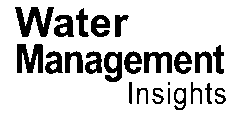In the bustling world of water management, a new wave of innovation is sweeping through, driven by the rise of the Internet of Things (IoT). Enas F. Khairullah, from the Department of Information Technology at King Abdulaziz University, Jeddah, Saudi Arabia has published a comprehensive review in the Journal of Information and Telecommunication (which is translated to English as Journal of Information and Telecommunication) that highlights the potential of LoRaWAN-based IoT applications in transforming water management systems. This isn’t just about monitoring water quality or metering usage; it’s about creating a smarter, more efficient, and sustainable future for water management.
Khairullah’s research delves into the specifics of LoRaWAN, a type of Low Power Wide Area Network (LPWAN) that is revolutionizing the way we think about IoT in water management. Unlike traditional technologies like Zigbee, Wi-Fi, and Bluetooth, LoRaWAN is designed to be energy-efficient and compatible with battery-powered devices. This makes it an ideal solution for long-range communication, a critical factor in water management applications that often span vast areas.
Khairullah emphasizes the versatility of LoRaWAN in water management, categorizing its applications into three key areas: water-quality monitoring, water-metering, and water-leakage detection. “LoRaWAN’s ability to support bidirectional communication and its low power consumption make it a game-changer for these applications,” Khairullah explains. “It allows for real-time monitoring and control, which can significantly enhance the efficiency and reliability of water management systems.”
The implications of this technology for the energy sector are profound. By optimizing water management, LoRaWAN can lead to significant energy savings. For instance, real-time leakage detection can prevent wastage, reducing the energy required for pumping and treating water. Moreover, efficient water metering can help utilities manage their resources more effectively, potentially lowering operational costs and reducing the carbon footprint of water management processes.
The study also addresses critical aspects such as scalability, simulation, and security, providing a holistic view of LoRaWAN’s potential in water management. As Khairullah notes, “The scalability of LoRaWAN makes it suitable for large-scale deployments, while its robust security features ensure that data integrity and privacy are maintained.” This scalability is particularly relevant for large-scale infrastructure projects, where the ability to manage vast networks of sensors and devices is crucial.
Looking ahead, the research by Khairullah sets the stage for future developments in the field. As more utilities and municipalities adopt LoRaWAN-based solutions, we can expect to see a paradigm shift in how water is managed. The integration of IoT with water management systems will not only enhance efficiency but also pave the way for more sustainable and resilient water infrastructure.
The potential for commercial impact is immense. Companies specializing in IoT solutions and water management technologies will find new avenues for growth and innovation. The energy sector, in particular, stands to benefit from the energy savings and operational efficiencies that LoRaWAN can bring to water management. As Khairullah’s research highlights, the future of water management is smart, connected, and powered by technologies like LoRaWAN.
